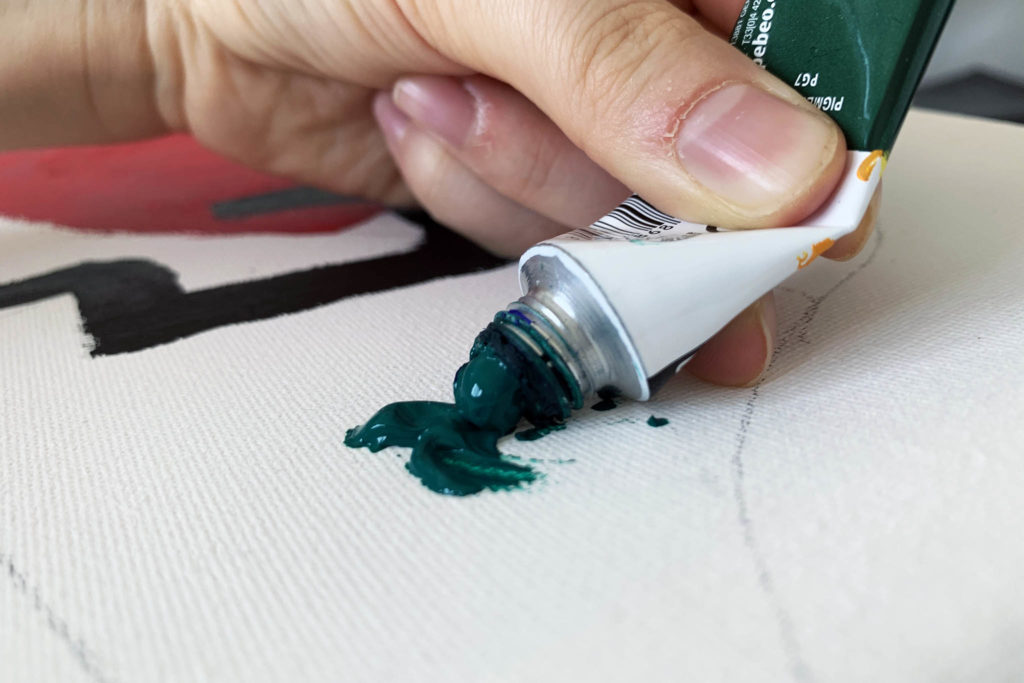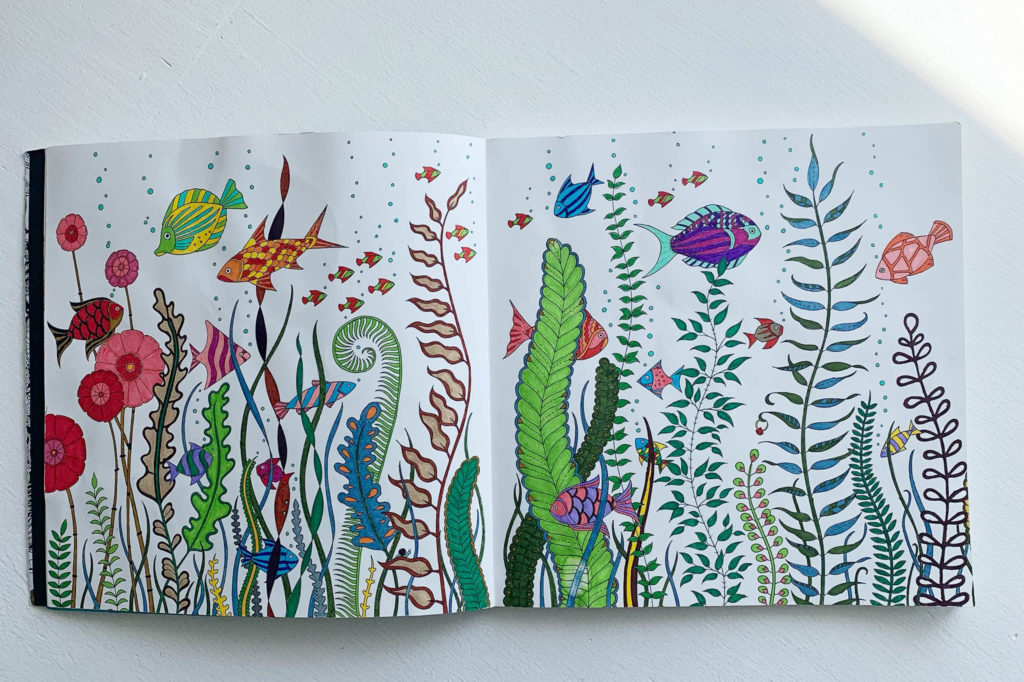Art therapy can alleviate stress and perfectionist tendencies with mindful and intentional practice

Painting doesn’t come naturally to me. The lines of my paintings are perpetually smudged, my colours bleed into each other leaving brown stains at the cusp of their borders, and you could reduce them to the splatterings of paint you would find hung up on any parents’ fridge.
Yet I think they are wonderful.
In March 2020, I absentmindedly put on a Bob Ross painting tutorial while making my toast and coffee. It was a lazy Sunday during the first COVID-19 lockdown around 11 a.m when the orange light of morning had long since faded into blue. The bushy-haired man on my TV screen with warm eyes flicked broad strokes of birch trees while a squirrel perched itself on top of his broad slumped shoulders. He dipped his wide-toothed paintbrush into a muddled palette and flicked it onto the canvas with a snap of his wrist.
His voice was soothing, like honey running down a spoon as he whispered effervescently through the screen, “Just a happy little mistake,” when he accidentally smudged a tree stump into his winter landscape. I stopped pouring my coffee and sat down to watch.
The thought of a mistake being good was foreign to me. My mistakes were often met with long internal monologues, but to Ross, mistakes were happy little accidents in the world of art — an accidental smudge of brown paint turned into a shadow, river or stump.
I binge watched Ross’ videos for weeks. His quirky catchphrases, from beating the devil out of a paintbrush to hosting squirrels on his show, were as endearing as the quiet calm he painted onto his canvases. His easy attitude towards life was catching, and when I picked up my first canvas the following weekend, I unintentionally began practicing a form of psychotherapy called art therapy.
At this time, I was climbing towards exam season in my third year of journalism school at Ryerson University in the middle of a global pandemic. Adapting to online school was difficult. I prefer the personal touch of in-person learning and as a perfectionist, if I can’t attain perfection, I avoid tasks. If there is a scuff on my wall, my whole apartment needs to be painted. If I have an assignment worth two per cent of my grade, I spend days thinking about it. Painting helps me curb my perfectionism. Whenever I feel overwhelmed with a task, I go to the dollar store and pick out a new canvas.
Painting has become a space for me where perfection is not necessary. I know I’m not a good painter and I don’t need to be because no one is watching.
What is perfectionism?
Perfectionism has been branded as a positive attribute, one you might even use to describe yourself in a job interview. In practice, the darker side of perfectionism comes with feelings of stress, procrastination and poor mental and physical health.
Perfectionism can be classified into three categories: self-oriented, where an individual demands perfection from themselves, socially prescribed, where a person looks to their peers for approval, and other-oriented, where a person expects perfection from others. These three categories were coined by psychologists Gordon Flett and Paul Hewitt in a study over three decades ago.
In 2016, Canadian, American and British college students had higher perfectionism scores than previous generations in all three categories, according to a study by the American Psychological Association.
Flett, a professor at York University and expert in the field of perfectionism, says that perfectionism can lead to mental burnout and can negatively impact long-term physical health.
While speaking with Flett, he recounted his time in the 1990s as the undergraduate director of psychology at York University, where he witnessed students underachieve because of their perfectionism.
“They were underachieving because they didn’t know how to cope,” he said. “They tended to blame themselves and get very self-critical. Sometimes they used self-criticism as motivation, but they just kept exhausting themselves.”
While perfectionism is found in every age group, university students have the unique ability to quantify their level of perfection with a GPA.
“Quantifiable grades are rewarded in academia, so it is quite hard not to let that attitude leak into everyday life, and it can be hard on one’s mental health and personal relationships, Says Phuong Nguyen, an art therapist and qualifying psychotherapist in Toronto.”
What is art therapy?
Art therapy is a form of psychotherapy that utilizes the creative process to facilitate self-exploration and articulate thoughts and feelings visually, according to the Canadian Art Therapy Association.
“Art specifically gives you a safe space to do that because the world will still be there if you make a mistake in a painting. It provides you with the space to accept yourself as an imperfect human because that’s what we all are,” says Nguyen.
Hannah Abrahamse, a fourth-year english and cultural studies student at Trent University, has always been a high achiever, but she started to struggle with perfectionism after getting bullied in her senior year of high school.
At times, perfectionism has prevented Abrahamse from living her life to the fullest. While applying for graduate schools this year, she was only able to dedicate her time to one application because she was so intent on making it perfect.
“One of my parents taught at my high school, so when I got good marks, people would say it was because my dad worked at the school,” she says, “so part of my perfectionism is that fear that people were right about me.”
Although Abrahamse credits her success in life to perfectionism, she recognizes that her self-esteem relies on receiving good grades. She also recognizes the negative impact it has on her mental health.
“If I get a bad mark, I focus on that instead of all the good marks,” she says. “I think that one bad mark is representative of my personality, and all the good ones were just me getting by.”
During the pandemic, good grades are even harder to come by for students. According to a survey by OneClass, 85 per cent of college students said their grades were negatively impacted last fall 0 by pandemic-related changes.
With the switch to online learning, Abrahamse found it hard to concentrate on her work at home and she has had to ask for extensions from her professors.
“This year has been unlike anything I have experienced. My stress levels are at the point where it has been difficult to manage and I’m just trying to find my coping mechanisms,” she says.
To combat this stress Abrahamse uses adult colouring books two to three times a week.
“I think because it’s just for me I don’t feel the need to be perfect and it relieves that pressure a lot,” she says. “When I complete a page, I feel like I’ve accomplished something. It relieves my stress and adds to my self-confidence.”

Unfortunately, picking up a paintbrush or marker won’t magically cure perfectionism. Flett explains that it is the intention put behind the activity. If you’re painting and thinking about your to-do list for the day, you may not reap the benefits of art therapy, but if you set aside intentional time to focus on being mindful, it can be fruitful.
Mia Maaytah, a fourth-year journalism student at Ryerson University, grew up with a rare artistic ability. In high school, she took art classes and in her first year of university, she commissioned her first painting.
She also grew up as a perfectionist and fondly recalls her mother telling her, “How you do anything is how you do everything.”
Maaytah carries this mentality into her artwork, and once she bridged the gap from hobby to side hustle her relationship with art changed.
“In some ways, it does still destress me when I’m painting, but the lead up to producing it is so stressful,” she says. “Everything in my life is deadline-oriented from school to working out, so having something that used to be a hobby turned into a deadline is an extra pressure.”
Maaytah is the perfect example to show that producing art alone isn’t guaranteed to relieve stress and curb perfectionist tendencies — it must be matched with intentional and mindful practice.
When art therapy can help
While some people say their perfectionism helps them in life, the price of perfectionism can make it a double-edged sword. Flett says the positive aspects of perfectionism can be achieved by striving for excellence instead. He emphasizes the difference between the two is being conscious as opposed to hyperconscious.
However, if perfectionism is starting to run your life, art therapy can help.
Nguyen says art therapy may be beneficial for someone who greatly fears perceived judgment from others, has rigid standards in their life with little to no flexibility and allows the need to do things perfectly to get in the way of living their life.
Creating time in your life to enjoy a hobby without any pressures or anxieties can be helpful, but seeing an art therapist or professional can add an extra layer of support and legitimacy to your practice.
“The difference between seeing a professional art therapist and making art at home with the attention of it being soothing is having another person in the room with you to walk you through the experience and talk to,” says Nguyen.
“When it’s preventing you from living a happy life, maybe you should try something just to be bad at it.”
